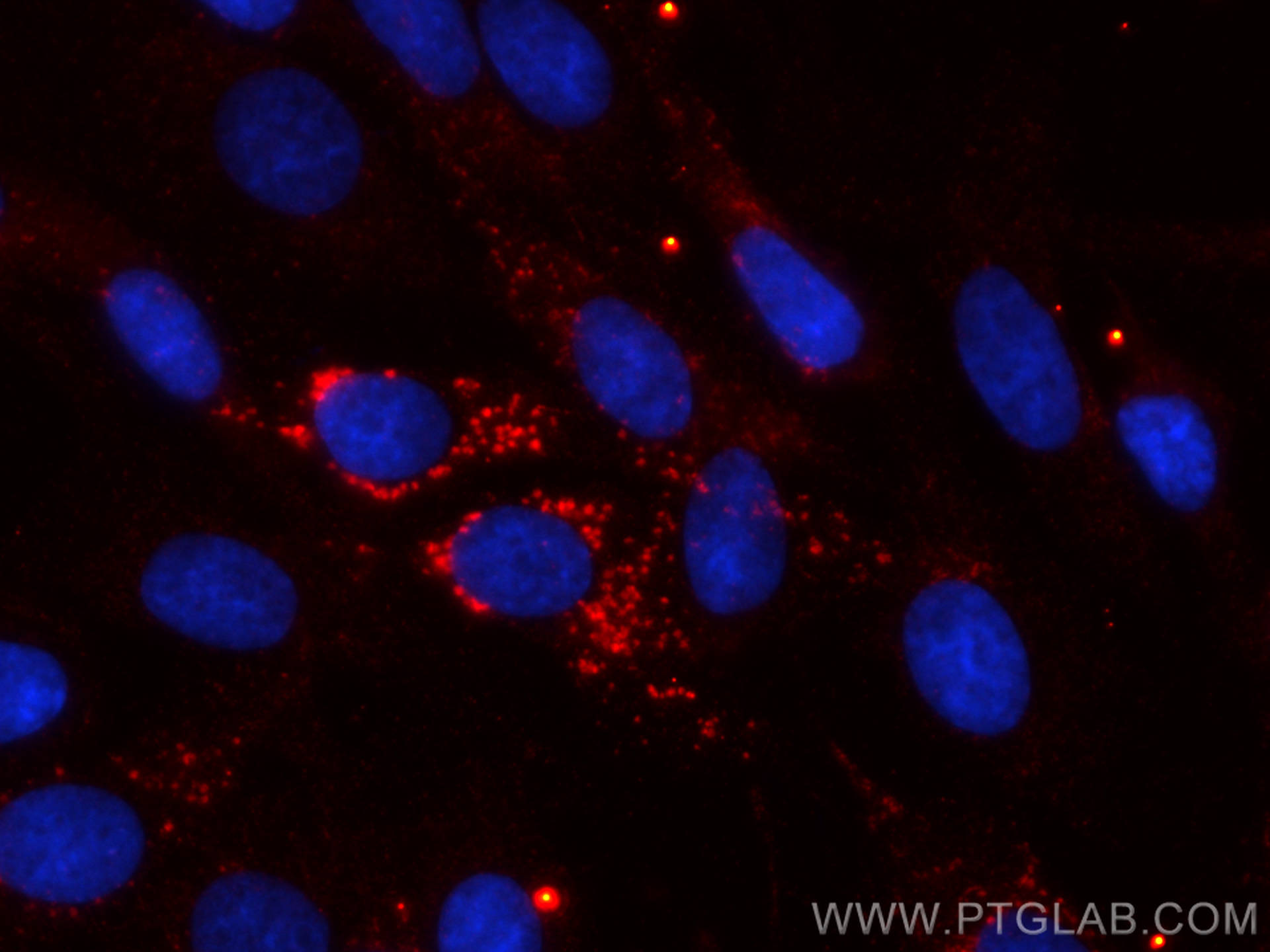验证数据展示
经过测试的应用
| Positive IF/ICC detected in | C6 cells |
推荐稀释比
| 应用 | 推荐稀释比 |
|---|---|
| Immunofluorescence (IF)/ICC | IF/ICC : 1:50-1:500 |
| It is recommended that this reagent should be titrated in each testing system to obtain optimal results. | |
| Sample-dependent, Check data in validation data gallery. | |
产品信息
CL594-60029 targets KMO in IF/ICC applications and shows reactivity with human, mouse, rat samples.
| 经测试应用 | IF/ICC Application Description |
| 经测试反应性 | human, mouse, rat |
| 免疫原 |
CatNo: Ag1109 Product name: Recombinant human KMO protein Source: e coli.-derived, PGEX-4T Tag: GST Domain: 107-407 aa of BC005297 Sequence: LSVSRENLNKDLLTAAEKYPNVKMHFNHRLLKCNPEEGMITVLGSDKVPKDVTCDLIVGCDGAYSTVRSHLMKKPRFDYSQQYIPHGYMELTIPPKNGDYAMEPNYLHIWPRNTFMMIALPNMNKSFTCTLFMPFEEFEKLLTSNDVVDFFQKYFPDAIPLIGEKLLVQDFFLLPAQPMISVKCSSFHFKSHCVLLGDAAHAIVPFFGQGMNAGFEDCLVFDELMDKFSNDLSLCLPVFSRLRIPDDHAISDLSMYNYIEKNMERFLHAIMPSTFIPLYTMVTFSRIRYHEAVQRWHWQKR 种属同源性预测 |
| 宿主/亚型 | Mouse / IgG1 |
| 抗体类别 | Monoclonal |
| 产品类型 | Antibody |
| 全称 | kynurenine 3-monooxygenase (kynurenine 3-hydroxylase) |
| 别名 | Kynurenine 3-monooxygenase, Kynurenine 3-hydroxylase, Kynurenine 3 monooxygenase, Kynurenine 3 hydroxylase, EC:1.14.13.9 |
| 计算分子量 | 486 aa, 56 kDa |
| 观测分子量 | 56 kDa |
| GenBank蛋白编号 | BC005297 |
| 基因名称 | KMO |
| Gene ID (NCBI) | 8564 |
| 偶联类型 | CoraLite®594 Fluorescent Dye |
| 最大激发/发射波长 | 588 nm / 604 nm |
| 形式 | Liquid |
| 纯化方式 | Protein G purification |
| UNIPROT ID | O15229 |
| 储存缓冲液 | PBS with 50% glycerol, 0.05% Proclin300, 0.5% BSA, pH 7.3. |
| 储存条件 | Store at -20°C. Avoid exposure to light. Stable for one year after shipment. Aliquoting is unnecessary for -20oC storage. |
背景介绍
KMO(Kynurenine 3-monooxygenase) is a membrane protein located on the outer membrane of mitochondria. Tissue distribution studies have revealed that, in rats, highest enzyme activity is found in kidney and liver, with brain having the least activity in comparison to peripheral organs(PMID: 9237672).
实验方案
| Product Specific Protocols | |
|---|---|
| IF protocol for CL594 KMO antibody CL594-60029 | Download protocol |
| Standard Protocols | |
|---|---|
| Click here to view our Standard Protocols |


